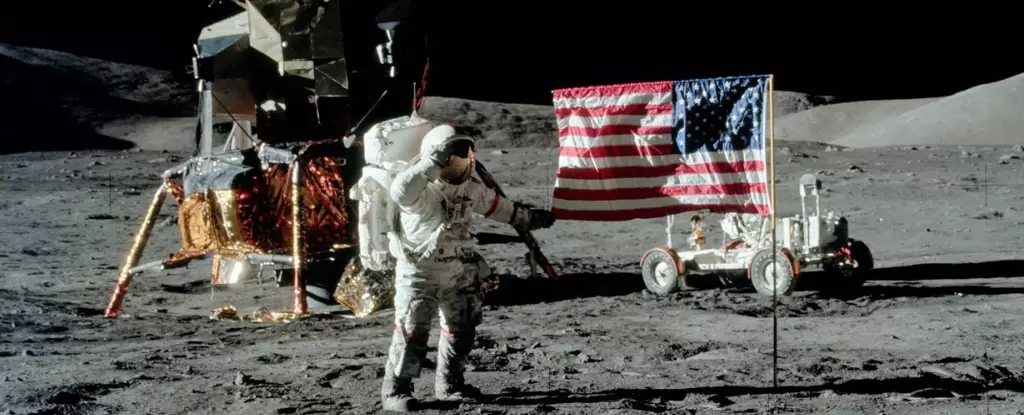Throughout history, humans have gazed at the sky, using the stars to navigate and find meaning. This curiosity, combined with technological advancements, has fueled our dreams of space exploration. From the launch of Sputnik-1 to plans for space tourism and mining on the moon, our ambitions have grown exponentially. However, as a group of academics researching environmental sustainability, we are concerned about the impact of resource exploitation on the lunar and space environments. In this article, we will examine the concept of a “lunar Anthropocene” and explore the parallels between human activity on Earth and its potential consequences for the moon.
The Anthropocene on Earth
The Anthropocene refers to a proposed geological epoch that describes the significant alterations to the Earth’s ecosystems resulting from human activities. Stratigraphers, geologists who study rock layers, have identified the starting point of the Anthropocene in the 1950s, marked by nuclear testing and its global impact. The concept of the Anthropocene challenges us to recognize our responsibility for pushing the Earth’s system to a tipping point through extractivism, consumption, and waste. Industrialization and economic growth have severed our connection with the natural world, leading to habitat destruction and the current mass extinction crisis.
Drawing from the parallels between Earth and the moon, there is a growing movement among researchers to consider a “lunar Anthropocene.” Since the first human contact with the moon’s surface, anthropogenic impact has been observed, with potential for significant escalation in the future. Stratigraphers and other scholars are engaged in a lively debate about whether the moon’s geological time scale should include a new epoch to reflect human influence.
Impacts of Human Activity on the Moon
Already, the moon bears witness to the consequences of human exploration. NASA estimates that over 500,000 pounds of human garbage, including equipment, excrement, statues, golf balls, human ashes, and flags, litter the moon’s surface. As plans for moon missions and resource extraction progress, the potential for further damage to lunar environments becomes a cause for concern. Just as on Earth, the throwaway culture and habitat destruction may replicate if we do not reconsider our needs and actions.
To avoid replicating the same mistakes on Earth, we must reflect on our relationship with the natural world. Historically, societies understood the importance of this connection for survival, respecting trees for their various contributions. However, industrialization and the pursuit of endless economic growth have eroded this relationship. The rapid destruction of trees over the past 100 years is a testament to this disregard for nature. If we fail to recognize the vital role of biodiversity and nature’s contributions to life, our survival as a species will be severely compromised.
Preventing Irreversible Damage
Naming a lunar Anthropocene serves as a word of caution, shocking and eliciting a sense of responsibility for those who may impact the moon’s surface. By raising awareness of the potential consequences, we can strive to prevent extensive and careless destruction. The moon offers us a unique opportunity to learn from our mistakes on Earth and pursue sustainable practices in space.
A New Vision for the Future
As we embark on new space missions and contemplate lunar industrialization, we must embrace a new vision for the future. This vision prioritizes environmental sustainability and responsible resource management. By recognizing the parallels between the Anthropocene on Earth and the potential lunar Anthropocene, we have the opportunity to change our trajectory and safeguard the moon’s fragile environments.
The dreams of space travel have evolved into concrete plans for missions to the moon and Mars, as well as space tourism and resource extraction. However, we must critically assess the impact of human activity on the moon and consider the potential consequences. The concept of a lunar Anthropocene challenges us to rethink our relationship with the natural world and strive for sustainable practices both on Earth and in space. By doing so, we can protect the moon’s unique environment and improve our chances of coexisting with extraterrestrial ecosystems in the future.



Leave a Reply